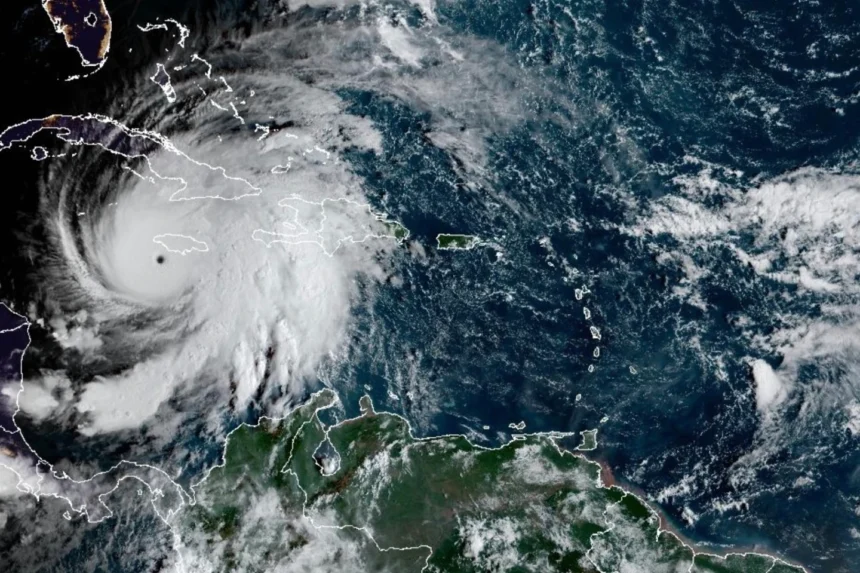Hurricane Melissa, a catastrophic Category 5 storm, has struck Jamaica, bringing record-breaking winds, flooding, and landslides. The hurricane, one of the strongest in Atlantic history, caused widespread destruction as it made landfall near New Hope.
Key Impacts in Jamaica:
- Winds: Sustained winds of up to 165 mph (270 kph), gusts near 200 mph (322 kph) in mountainous areas.
- Storm surge: Life-threatening surge up to 13 feet (4 meters) along southern coasts.
- Infrastructure damage: Roofs torn off, trees downed, boulders on roads, and power outages affecting over 240,000 customers.
- Casualties: Seven deaths reported in the Caribbean, three in Jamaica.
- Evacuations and shelters: Citizens urged to stay indoors; some patients relocated to higher floors in hospitals. Officials warned of displaced crocodiles due to flooding.
Jamaican officials warned that no infrastructure can withstand a Category 5 hurricane, highlighting the challenge of recovery after the storm. Rescue operations were prepared with boats, helicopters, and emergency supplies, including generators and clean water for affected populations.
Hurricane Records:
- Ties 1935 Labor Day Hurricane in Florida and 2019 Hurricane Dorian for wind speed at landfall (185 mph / 295 kph).
- Central pressure: 892 millibars, matching the 1935 hurricane.
Impact on Cuba:
- Melissa is forecast to reach eastern Cuba late Tuesday or early Wednesday.
- Up to 20 inches (51 cm) of rain expected with significant storm surge.
- Evacuations: Over 200,000 people in Holguín province and similar numbers from Banes town relocated to shelters.
- Citizens rushed to protect homes, crops, and livestock. Cuban President Miguel Díaz-Canel urged the public not to underestimate the storm’s strength.
Meteorological Notes:
- Melissa was located about 20 miles (35 km) south-southwest of Montego Bay and 230 miles (370 km) southwest of Guantánamo, Cuba.
- The hurricane moved north-northeast at 8 mph (13 kph).
- Satellite imagery and reconnaissance flights by the U.S. Air Force provided critical data for forecasts.
Authorities, humanitarian agencies, and nonprofits are on standby to provide food, medicine, and emergency aid. Officials emphasized the importance of conserving resources, particularly clean water.
Michael Brennan, director of the U.S. National Hurricane Center, warned of “total building failures” in the storm’s core, calling it a “very dangerous scenario.”







